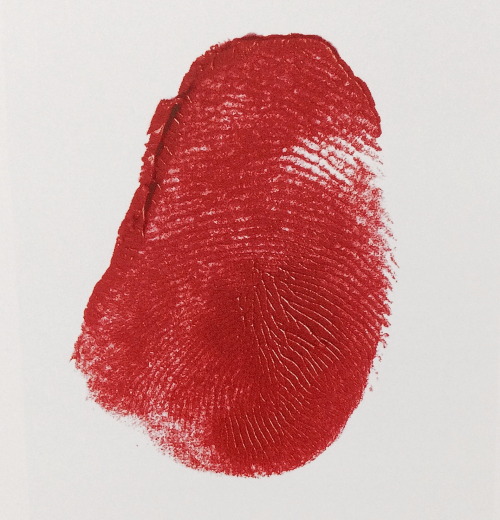Physicist Create A Fluid With Negative Mass



Physicist Create a Fluid With Negative Mass
Physicists from Washington State university have created a liquid with negative mass meaning that when you push it, instead of accelerating in that direction, it accelerates backwards.
Matter can have a negative mass much the same way that particles can be negatively charged. Newton’s second law of motion (F=ma) tells us that mass will accelerate in the direction of the force so we can deduce that matter with a negative mass would do the opposite and accelerate against the force.
To create the conditions for negative mass, Peter Engels and his team started by cooling rubidium atoms to a Bose-Einstein condensate meaning they reached very near absolute 0. The researchers used lasers to trap the atoms in an area less than 100 microns across and allow high energy particles to escape cooling them further. Then to create negative mass, the physicists applied a second set of lasers to change the way atoms spin back and forth. They then removed the first set of lasers causing the rubidium to rush out and appear to hit some sort of invisible wall; behaving as if it had a negative mass.
What’s great about this is the control we have over the negative mass without any other complications. This gives us a new tool we can use to engineer experiments in astrophysics looking at neutron stars, black holes, dark energy and a lot more.
More Posts from Theperpetualscholar and Others



Could this be the most powerful scientific tool?
Described as “the biggest biotech discovery of the century” by the scientific community, CRISPR-Cas has been all the rage in labs around the world for its exceptional ease and accuracy in editing the gene of almost any organism.
In 2012, UC Berkeley’s world-renowned RNA expert and biochemist Jennifer Doudna was part of a research team that discovered that you could use the CRISPR system as a programmable tool: scientists can precisely target a gene sequence, cutting and changing the DNA at that exact point.
CRISPR, which stands for “clustered regularly interspaced short palindromic repeats” are repeated DNA sequences that are an essential component of a bacteria’s defense system against viruses.
And what started out as a study to understand the bacterial immune system unwittingly resulted in a powerful technology that has the potential to cure genetic diseases, create more sustainable crops, and even render animal organs fit for human transplants.
We’ve had gene-editing technology for decades, but now, “we’re basically able to have a molecular scalpel for genomes,” says Doudna.
“All the technologies in the past were sort of like sledgehammers.”
GIF source: Business Insider
Crow parent waiting patiently for some snacks, teenage crow waiting not so patiently.

A note on Nuclear Fission
When an atom fissions, it releases a teeny tiny amount of energy ( The decay of one atom of uranium-235 releases about 200MeV or about 3*10-11J.). But atoms are quite small. An atom does not make a big explosion when it splits.
To get a big explosion, you need to split lots and lots and lots and lots and lots and lots and lots and lots and lots of them—many, many trillions of them.
Each one releases only a teeny amount of energy, but when you add up the teeny amount of energy from trillions and trillions and trillions of atoms, then you get a big explosion. (The explosion of 1kg of TNT releases 4MJ).






Important Questions

One of you guys messaged this in today. Thank you again.
A short (FREE) two-week course on facial reconstruction!
This is where Art meets Forensic Science and Anthropology.


Someone said "Are you really so stupid to think that Africa has the same technological advances as us? If they did they would probably have clean water and not live in houses made of sticks and mud. Get over yourself and stop being so ignorant."..... Below is a tiny collection of images of the Africa they refuse to show you..




ches






I’m sorry you’ve been made to believe that the whole of Africa is poor, I really am..

-
 day-knight liked this · 4 years ago
day-knight liked this · 4 years ago -
 day-knight reblogged this · 4 years ago
day-knight reblogged this · 4 years ago -
 day-knight reblogged this · 4 years ago
day-knight reblogged this · 4 years ago -
 azufres reblogged this · 4 years ago
azufres reblogged this · 4 years ago -
 blizzposts liked this · 4 years ago
blizzposts liked this · 4 years ago -
 osiristhings liked this · 4 years ago
osiristhings liked this · 4 years ago -
 gytrash reblogged this · 4 years ago
gytrash reblogged this · 4 years ago -
 gytrash liked this · 4 years ago
gytrash liked this · 4 years ago -
 vera-wlestdt liked this · 4 years ago
vera-wlestdt liked this · 4 years ago -
 starlightdxrling liked this · 4 years ago
starlightdxrling liked this · 4 years ago -
 shapeshifter-of-constellation reblogged this · 4 years ago
shapeshifter-of-constellation reblogged this · 4 years ago -
 evalynarose liked this · 4 years ago
evalynarose liked this · 4 years ago -
 fabloner liked this · 4 years ago
fabloner liked this · 4 years ago -
 mirrorik liked this · 4 years ago
mirrorik liked this · 4 years ago -
 solarbrit liked this · 4 years ago
solarbrit liked this · 4 years ago -
 slxttycuts liked this · 4 years ago
slxttycuts liked this · 4 years ago -
 strangesuhi liked this · 4 years ago
strangesuhi liked this · 4 years ago -
 stray70 liked this · 5 years ago
stray70 liked this · 5 years ago -
 itsloveleo liked this · 5 years ago
itsloveleo liked this · 5 years ago -
 theroseofmypeople liked this · 5 years ago
theroseofmypeople liked this · 5 years ago -
 suuplex liked this · 5 years ago
suuplex liked this · 5 years ago -
 bucketbunny reblogged this · 5 years ago
bucketbunny reblogged this · 5 years ago -
 astronautical-v liked this · 5 years ago
astronautical-v liked this · 5 years ago -
 sinnful-street-blog liked this · 5 years ago
sinnful-street-blog liked this · 5 years ago -
 theborderworldxen reblogged this · 5 years ago
theborderworldxen reblogged this · 5 years ago -
 two-cans-of-ravioli liked this · 5 years ago
two-cans-of-ravioli liked this · 5 years ago -
 lelmadsoul liked this · 5 years ago
lelmadsoul liked this · 5 years ago -
 missanthropicprinciple liked this · 5 years ago
missanthropicprinciple liked this · 5 years ago